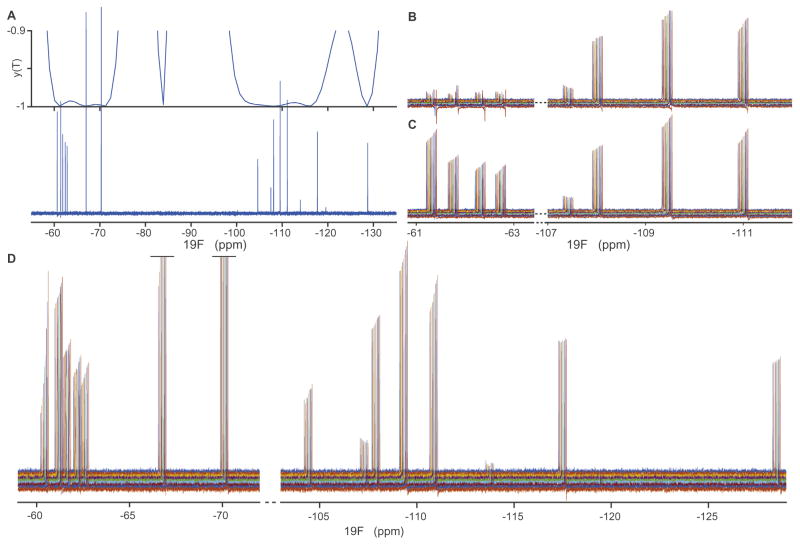Fig. 4.
Experimental test of sample-specific 19F refocusing pulse. A: The spectrum of the mixture of 19F labeled fragments (lower), overlayed with the simulated y-magnetization after application of the pulse from an initial ρ(0) = Iy (upper). Clearly, the y part of the magnetization is being inverted for the specific spins in the sample. Further simulations (not shown) confirm that the z-component is also inverted, and the x-component is not inverted; that is, the pulse functions as a refocusing pulse for this set of resonances. B: CPMG experiment using a hard pulse for refocusing. The hard pulse works well near its carrier frequency, but we observe loss of signal and dephasing far off resonance, e.g. near −62 ppm. C: In contrast, the optimal pulse refocuses all spins. D: The full CPMG spectrum using the optimal refocusing pulse. All 15 resonances show smooth CPMG decays.

